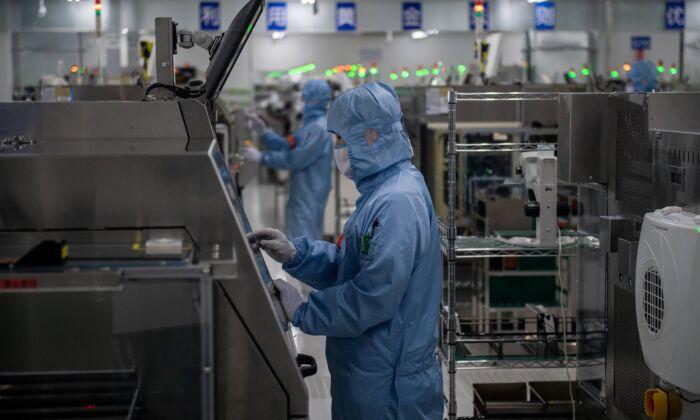At a factory in northern China, workers are busy testing an automated vehicle designed to move bulky items around industrial spaces, one of a new generation of robots Beijing wants to shift the country’s manufacturing up the value chain.
The Tianjin-based robot maker has received tax breaks and government-guaranteed loans to build products that modernize China’s vast factory sector and advance its technological expertise.
“The Chinese regime is paying great attention to the manufacturing sector and the real economy—we can feel that,” said Ren Zhiyong, general manager of Tianjin Langyu Robot Co, as he gave Reuters a guided tour of his plant.
China is backing R&D efforts by high-tech manufacturers like Langyu, driven by an urgent desire to reduce reliance on imported technology and reinforce its dominance as a global factory power, even as it cracks down on other parts of the economy.
Beijing’s pivot puts the focus on advanced manufacturing, rather than the services sector, to steer the world’s second-largest economy past the so-called “middle income trap,” where countries lose productivity and stagnate in lower-value economic output.
Ren expects revenues to more than double to $15.52 million this year from 2020, on increased demand for high-tech products such as Langyu’s automated guided vehicles.
More broadly, the city of Tianjin plans to invest $311 billion between 2021 and 2025, with 60 percent earmarked for strategic emerging industries, Yin Jihui, head of the Tianjin Industry and Information Technology Bureau, told Reuters.
The investment, comprising corporate and government outlays, will help boost manufacturing to 25 percent of economy in 2025 from 21.8 percent in 2020, Yin said. The share of strategic industries in Tianjin’s factory output will also rise to 40 percent, Yin said, from 26.1 percent last year.
COVID-19 and the Sino-U.S. trade war have reframed the way policymakers see factories: no longer just grimy relics of an old economy but assets of strategic value. During the pandemic, China’s factories have churned out everything from masks and ventilators to work-from-home electronics, propelling the economic recovery from its record slump in early 2020.
Additionally, the trade war with the United States and Washington’s tech curbs exposed China’s lack of high-tech knowhow, hardening Beijing’s resolve to speed up innovation.
“For China to achieve tech self-reliance in some sectors is, in my understanding, a matter of survival,” said Tu Xinquan, head of China Institute for WTO Studies at University of International Business and Economics.





